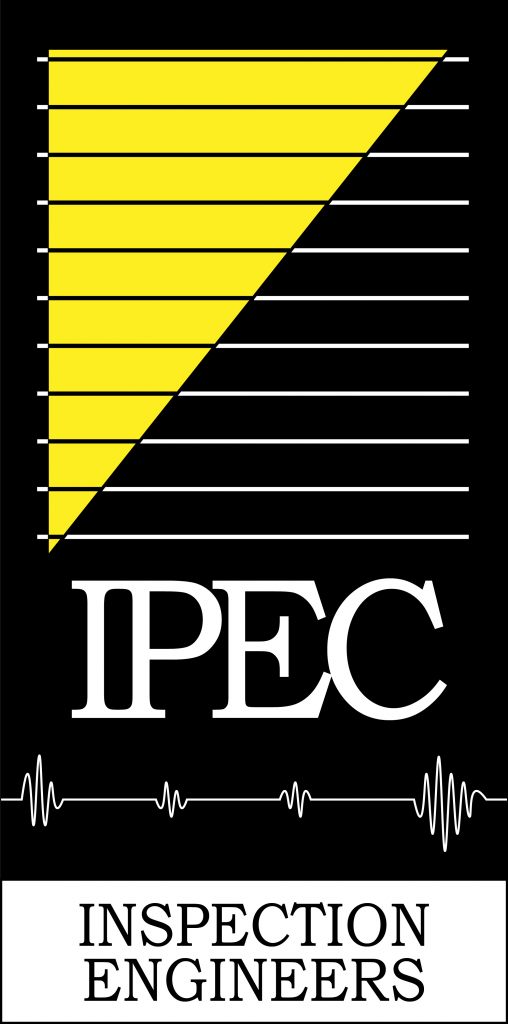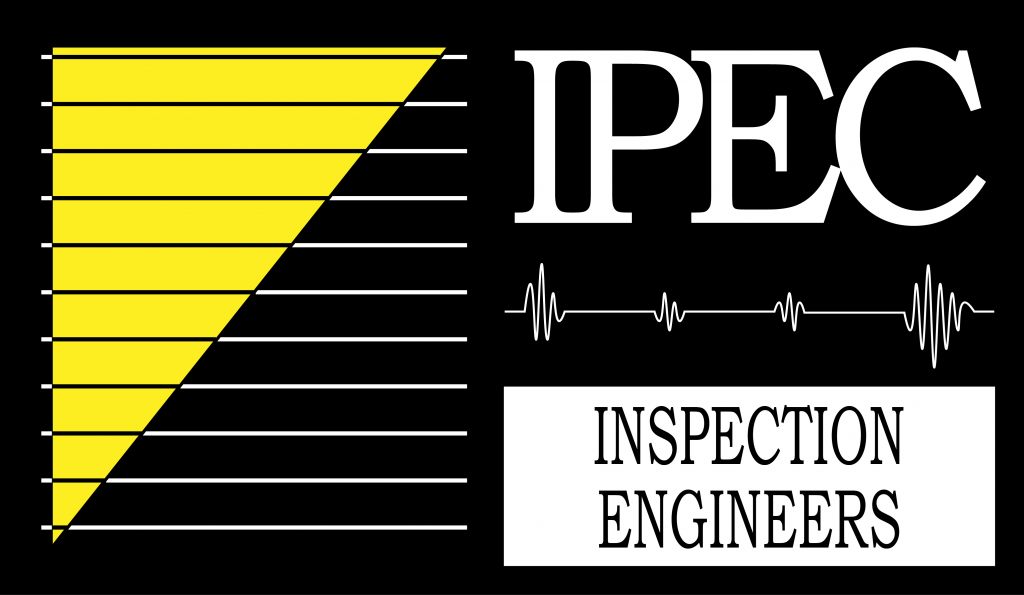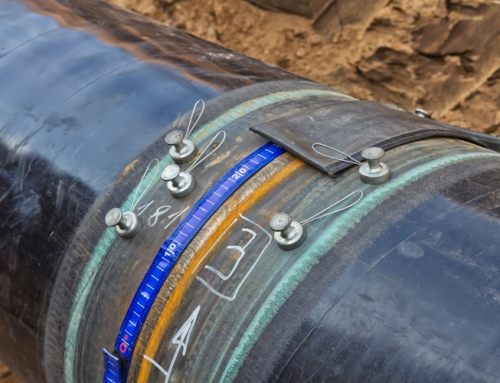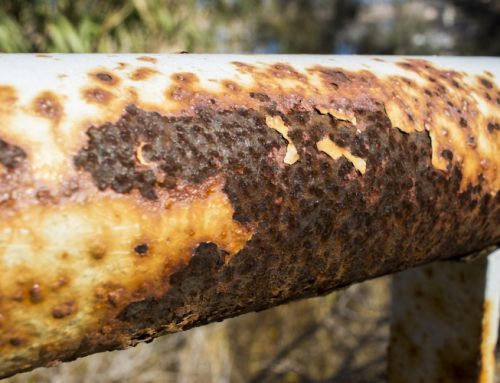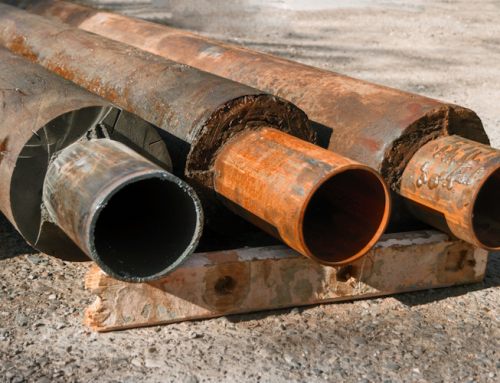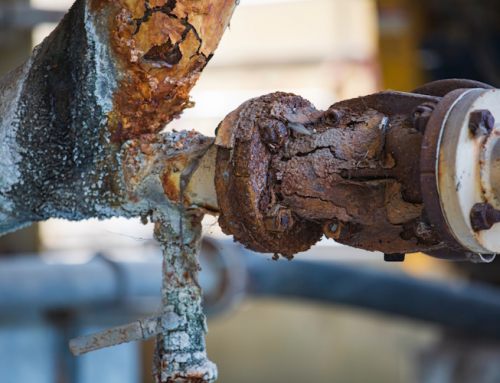Introduction to Shell Boilers & their Examination
Since 1993 Inspection Organisations have noted a marked increase in the number of shell boilers exhibiting cracks at shell-to-endplate and furnace-to-endplate welds. Records show that over 10% of boilers tested in 1995 exhibited cracks at the furnace and access tube-to endplate welds whilst 2.5% of boilers had cracks at the shell-to-endplate welds. These figures represent a threefold increase since 1992/3.
Such cracks would have developed due to fluctuating stress levels at these junctions and would have been influenced by the internal environment within the boiler. The stresses are due to a combination of pressure loads, differential thermal expansion and local temperature gradients. Oxygen impurities in the boiler water/steam and inadequate pH (water chemistry) control, among other contributing factors, cause a hostile environment within the boiler confines.
The prime purpose of the ultrasonic examinations was to detect cracking from the toe of the internal seal weld of shell and furnace-to-endplate attachment welds however other significant defects in the main body of the weld, such as lack of fusion, incomplete penetration and internal cavities were also discovered.
The likelihood of buried defects, such as unfused land in the body of the weld, being propagated under boiler operating conditions and rendering the junctions unsafe was evaluated. The likely magnitude of stresses in these areas and the capability of the cyclic conditions to initiate significant fatigue crack growth within the specified inspection period have been considered. In particular, stresses induced due to pressure, differential expansion and thermal cycling – especially in the furnace-to-endplate attachments where these stresses can be severe – were the subject of a series of finite element analyses using different models and conditions. The results indicated that, provided defects were within the limits specified in the SAfed boiler examination guidelines, significant crack propagation was unlikely under normal operating conditions.
While some of the increased incidence of cracking may be attributable to Inspection Organisations taking greater control of the testing of boilers, the overall incidence of cracking appears to be increasing as the general age of boiler plant increases. Changes in operational practices and the demand for higher output from smaller boilers are factors which could also be contributing to this finding.
The Health and Safety Executive’s Guidance Note (PM 36) provided guidance on weld defect acceptance levels for set-in endplates to furnace and shell connections of shell type boilers, however
the current SAFed documents (SBG-01 & SBG-02) supersedes PM 36 and additionally addresses problems of in-service cracking in the region of such junctions.
Typical Boiler Types
![]() = Generally indicates 100% ultrasonic examination is required.
= Generally indicates 100% ultrasonic examination is required.
= Generally indicates 20% ultrasonic examination is required.
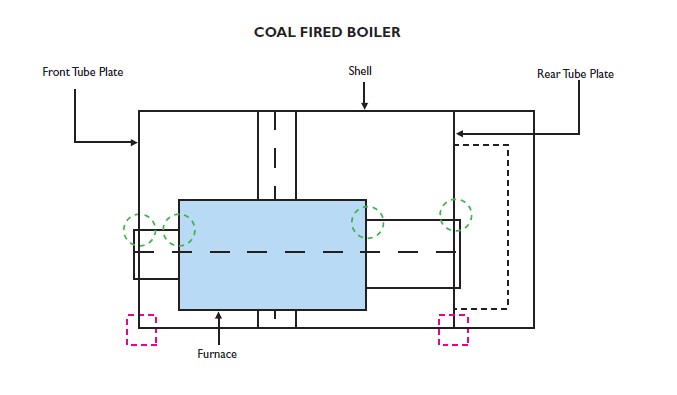
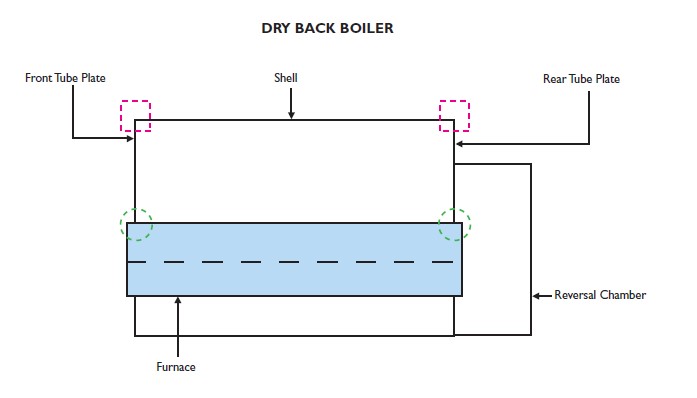
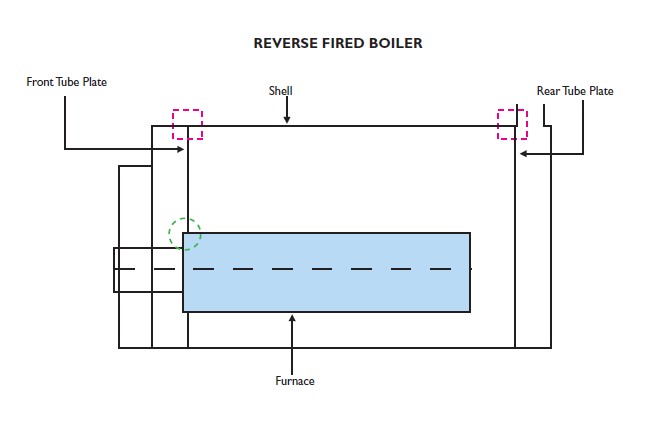
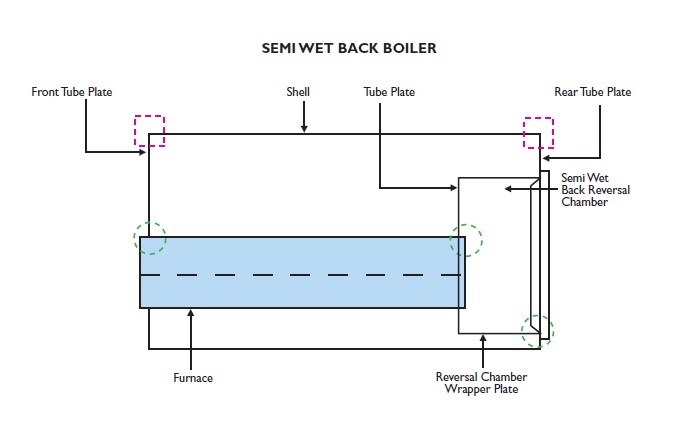
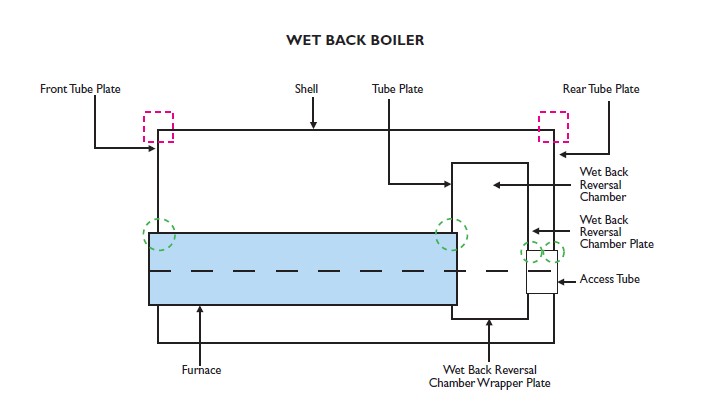
Ultrasonic Examinations
Ultrasonic tests are normally carried out as part of an examination under “The Pressure Systems Safety Regulations” (SI 2000 No 128). These regulations place duties on competent persons and require them to ensure that proper procedures and precautions are followed even when some aspects of the work are carried out by other organisations. In many instances the tests will be undertaken by the competent person who has the necessary documented experience and expertise to perform them.
A current SAFed/BINDT qualification for NDT of shell boilers ensures that the requirements are met and should satisfy the Competent Person’s obligations to ensure that proper procedures and precautions are followed.
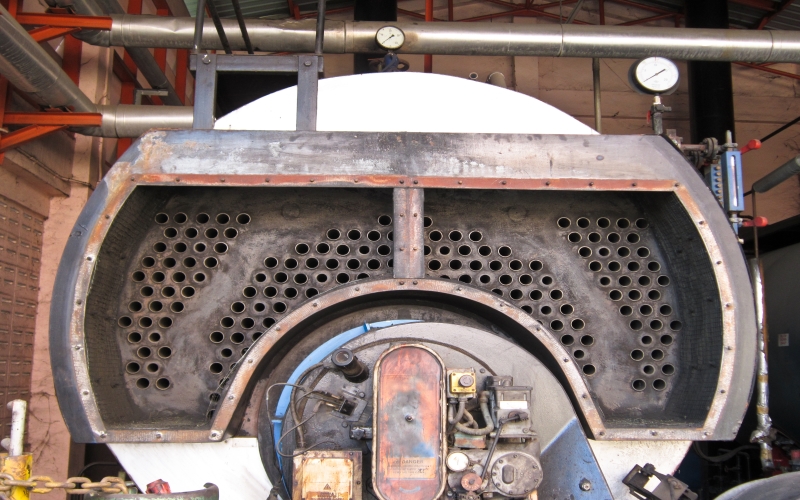
(End View image of a typical industrial boiler)
Source/Credit: SAfed.co.uk (SBG-01 & SBG-02) & BINDT
Author: James Murphy, Operations Manger of IPEC Inspection Ltd.
